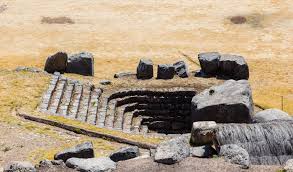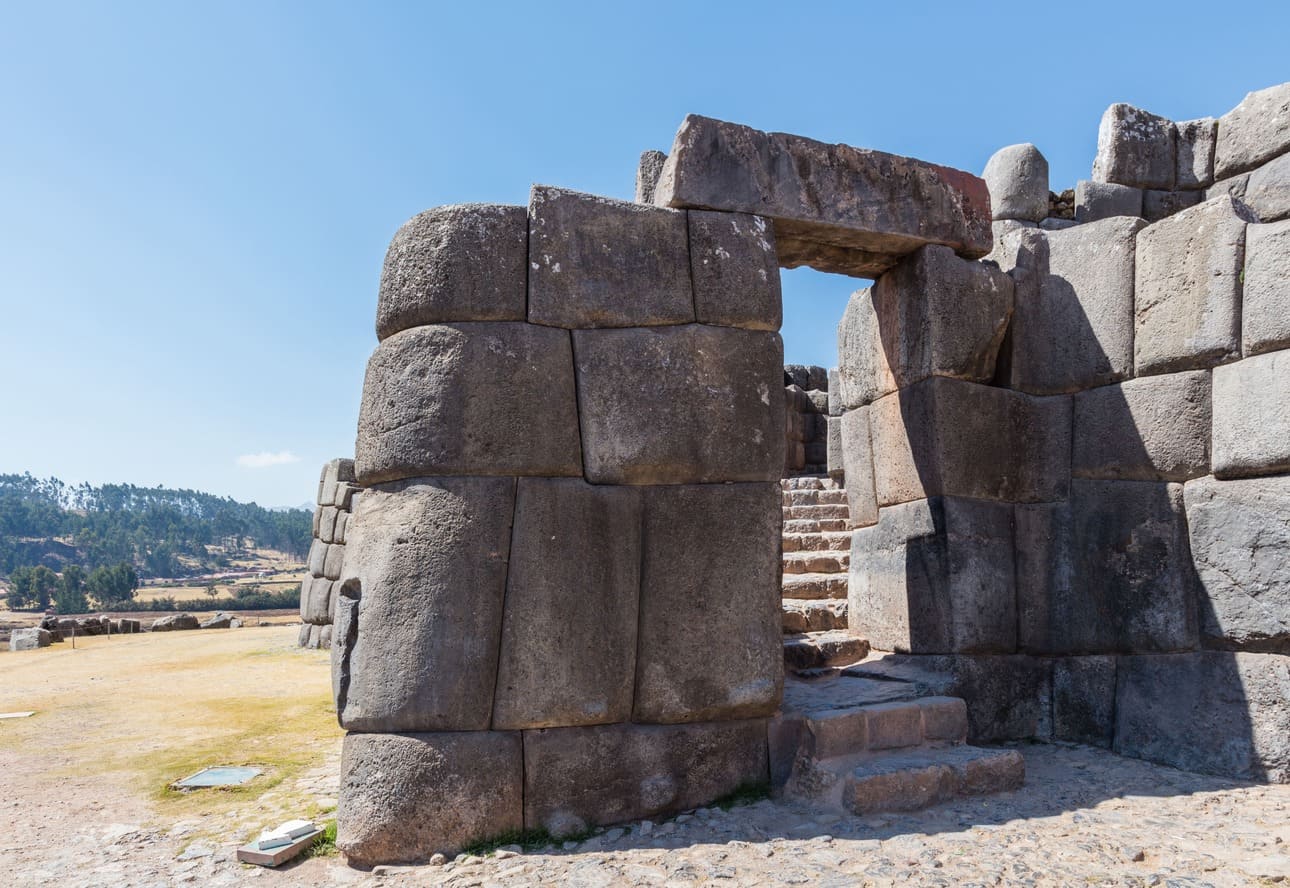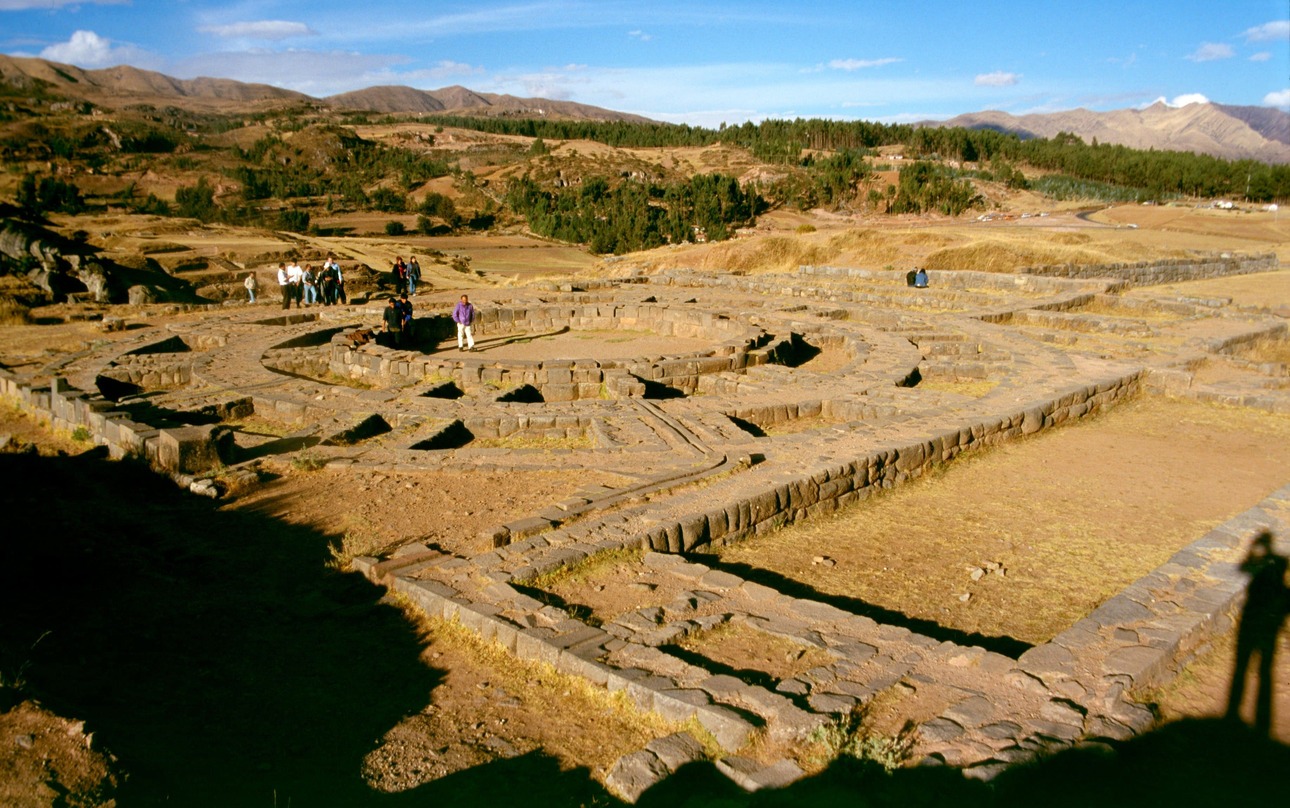The Sacsayhuamán Fortress is an impressive example of Incan architecture located near the center of Cusco, Peru. This archaeological complex is historically and culturally significant to Peruvians, and it attracts thousands of national and international tourists each year. Sacsayhuamán is awe-inspiring, and experts, archaeologists, and historians continue to study it today, as its great walls hold secrets yet to be revealed. As a result, we'd like to share important information about the Sacsayhuamán Fortress, including its history and architectural details.

History of Sacsayhuamán Fortress
The construction of the Sacsayhuamán Fortress is believed to have begun in the 15th century during the reign of Inca Pachacútec. It was designed as a fortification to protect the city of Cusco and was used as a place of worship and for religious ceremonies.
During the Spanish conquest, the fortress suffered significant structural damage, and many of its enormous stone blocks were later used to construct colonial buildings in the city. Despite this, much of the original structure has survived and remains standing, powerful against time, sun, rain, and the wars for the freedom of the Incan people. Today, it remains an impressive example of the architectural prowess of South America's most powerful civilization.
What Does Sacsayhuamán Mean?
The name "Sacsayhuamán" has several interpretations, all of which are rich in history and mystery. Here are three important explanations to help you understand the meaning of this ancient term:
- Satisfied Hawk: Derived from the Quechua words "saqsay," meaning "full" or "satisfied," and "waman," meaning "hawk," the term "Sacsayhuamán" translates to "satisfied hawk." This interpretation is associated with a mythical Inca figure who represents the protective spirit of the first Inca, Manco Qhapaq. The hawk, a symbol of Inca conquests, represents power and vigilance.
- Another interpretation is based on the words "saccsa," meaning "beaten maize," and "uma," meaning "head." This translates to "fortified head hill," referring to the shape of a puma, which the fortress is thought to resemble.
- City of Stone: According to a third explanation, "Sacsayhuamán" combines the Greco-Latin word "Saxea," meaning "stone," and the Quechua word "haman," meaning "city." Thus, "Saxea-haman" translates to "city of stone," which accurately describes the fortress's impressive stone structure and architectural significance.

Architecture of Sacsayhuamán Fortress
The Sacsayhuamán Fortress is made up of three large zigzagging walls. The walls are constructed of massive stone blocks that have been carved and polished to achieve exact shapes and angles. The stones fit together so perfectly that no mortar is required, which is an impressive feat of engineering and architecture, especially given the size and weight of the pieces used. Each stone has been carved with such precision that even a piece of paper cannot fit through the joints between the blocks.
The fortress's first wall, the largest of the three, is 400 metres long and can reach heights of up to 18 metres. Some of the stone blocks that comprise this wall weigh more than 300 tons, and it is estimated that approximately 200,000 stone blocks were used to construct Sacsayhuamán. The second and third walls are smaller than the first and form a crescent shape. They are also made from carefully carved and fitted stone blocks. The complexity of building these walls is impressive, given the precision of the fit and the difficulty of transporting large pieces without the use of heavy machinery or modern technology.
The fortress's architectural complex includes several smaller buildings, plazas, temples, and storage facilities spread across approximately three hectares. The Temple of the Sun and Temple of the Moon are two of the most significant structures on the site.
What was the original purpose of the Sacsayhuamán Fortress?
The Sacsayhuamán Fortress's original purpose remains unknown, but it is thought to have been built to protect Cusco from enemy invaders. It has also been suggested that the fortress was used for religious ceremonies, given its numerous plazas and sanctuaries. Pre-Columbian peoples honored their gods in worship spaces, which served multiple purposes such as places of worship, plazas for important celebrations, storage facilities, and military structures.
The Sacsayhuamán Fortress was also the site of a major battle during the Spanish conquest of the Inca Empire. In 1536, the Incas, led by General Manco Inca, rose up against the Spaniards, and the Sacsayhuamán Fortress was one of the main points of resistance. The battle lasted several months, and while the Spaniards eventually defeated the indigenous people, the Sacsayhuamán Fortress stands as a symbol of the Inca Empire's determination, resilience, and power.

Darkmagic (CC BY-SA)
Who Built Sacsayhuamán?
The masterminds behind Sacsayhuamán include Huallpa Rimachi Inka Apu, who designed the plans; Inka Maricanchi; Acahuana Inka, who is linked to Tiahuanaco; and Calla Cunchuy, who managed the Saycusca Rumi, or "tired stone."
How Long Did the Construction of Sacsayhuamán Take?
The construction of Sacsayhuamán took 77 years, beginning in the mid-15th century during the reign of Inka Yupanqui in 1431 and concluding in 1508, 27 years into the reign of Huayna Capac.
Sacsayhuamán Fortress Today
Today, the Sacsayhuamán Fortress is one of Cusco's main tourist attractions, with thousands of visitors each year. The fortress is a UNESCO World Heritage Site and represents the grandeur and architectural skill of the Andean people.
In addition to its historical and architectural significance, the fortress hosts important traditional celebrations and festivities, such as Inti Raymi, or the Festival of the Sun, which takes place every June 24. Thousands of people gather at the fortress during this festival to witness a ceremony commemorating the winter solstice and celebrating the Sun's significance in Incan culture.
Overall, the Sacsayhuamán Fortress is a stunning monument and a significant symbol of Peruvian history and culture. Its imposing structure and historical significance make it a must-see destination on your journey back to the Inca Empire's glory days. Travel to Cusco with us, explore the Sacsayhuamán Fortress, and learn about the Incan heritage in complete confidence and safety.

Sacsayhuamán
Location
The Sacsayhuamán Fortress is located about 2 kilometers north of Cusco's Plaza de Armas, situated at an altitude of 3,700 meters above sea level. This impressive site spans over 3,000 hectares on a hill surrounded by mountains. You can reach this location in approximately 10 minutes by car from Cusco's Plaza de Armas, or enjoy a 45-minute walk to get there.
How to get to Sacsayhuamán
There are several ways to get to Sacsayhuamán from Cusco's city center:
- On foot: The walk is short but steep, taking approximately 30 to 45 minutes. Head north from Cusco's Plaza de Armas, ascending the narrow streets. It's good exercise and provides stunning views of the city as you ascend.
- By Taxi: If you want to save energy for exploring the ruins, taking a taxi is a convenient and reasonably priced option. The ride lasts about ten minutes and drops you right at the entrance. Before you leave, make sure you and the driver have agreed on the fare.
- By Tourist Bus: Some companies provide tours that include Sacsayhuamán and other nearby archaeological sites. It's a good option if you want to visit Qenqo, Puca Pucara, and Tambomachay all in one day.
- Guided Tour: This is the best option because you won't have to worry about anything and can simply enjoy. Hiring a guided tour from Cusco is a great way to gain historical and cultural context while visiting.
Practical Tips
For your visit to the Sacsayhuamán ruins, be sure to bring the following for a comfortable and enjoyable experience:
- Personal documentation
- Hat
- Sunglasses
- Sunscreen
- Light clothing
- A good camera to capture the moment
- Hiking shoes
- Cash
- Small backpack
- Water

Recommendations:
Keep these suggestions in mind when visiting Sacsayhuamán Fortress:
- Follow the Marked Path: The arrows will guide you. Following them ensures an orderly and thorough visit that does not miss anything important.
Hands Visible: Despite the temptation, avoid touching the stones. Our hands can transfer substances that speed up the wear of these ancient testaments. - Respect the Structures: We understand that you want the best photo, but please do not lean on or climb the walls. Our weight can harm these millennia-old structures.
- Have you gotten separated from the group? Don't worry, the park rangers will help you safely reconnect with your group.
- Leave Snacks and Pets at Home: Please help us preserve the park's beauty and integrity by not bringing food or pets with you.
The Sacsayhuamán Fortress is one of the world's most impressive archaeological sites. Located on the northern outskirts of Cusco, Peru, and built in the 15th century under the command of Inca Pachacútec, this impressive masterpiece is not only a spectacle of pre-Columbian engineering, but also a portal through time that connects us to the magical world of the Incas. Sacsayhuamán, with its massive zigzagging walls and breathtaking panoramas, is a masterpiece of architecture, history, and spirituality. Prepare to discover the splendor of the Inca Empire!
Ready to embark on your Peruvian adventure? Book your trip now and start the adventure of a lifetime.
Thank you for reading!
Please, follow us on Facebook and Instagram, click on the following icons: ![]()
![]()
![]()
And If you liked the article, you are very welcome to share it on your social media.
